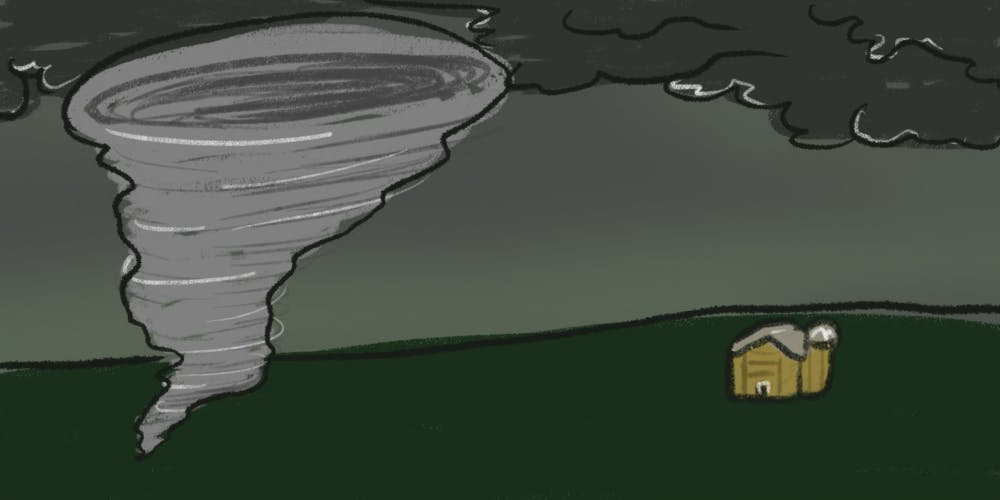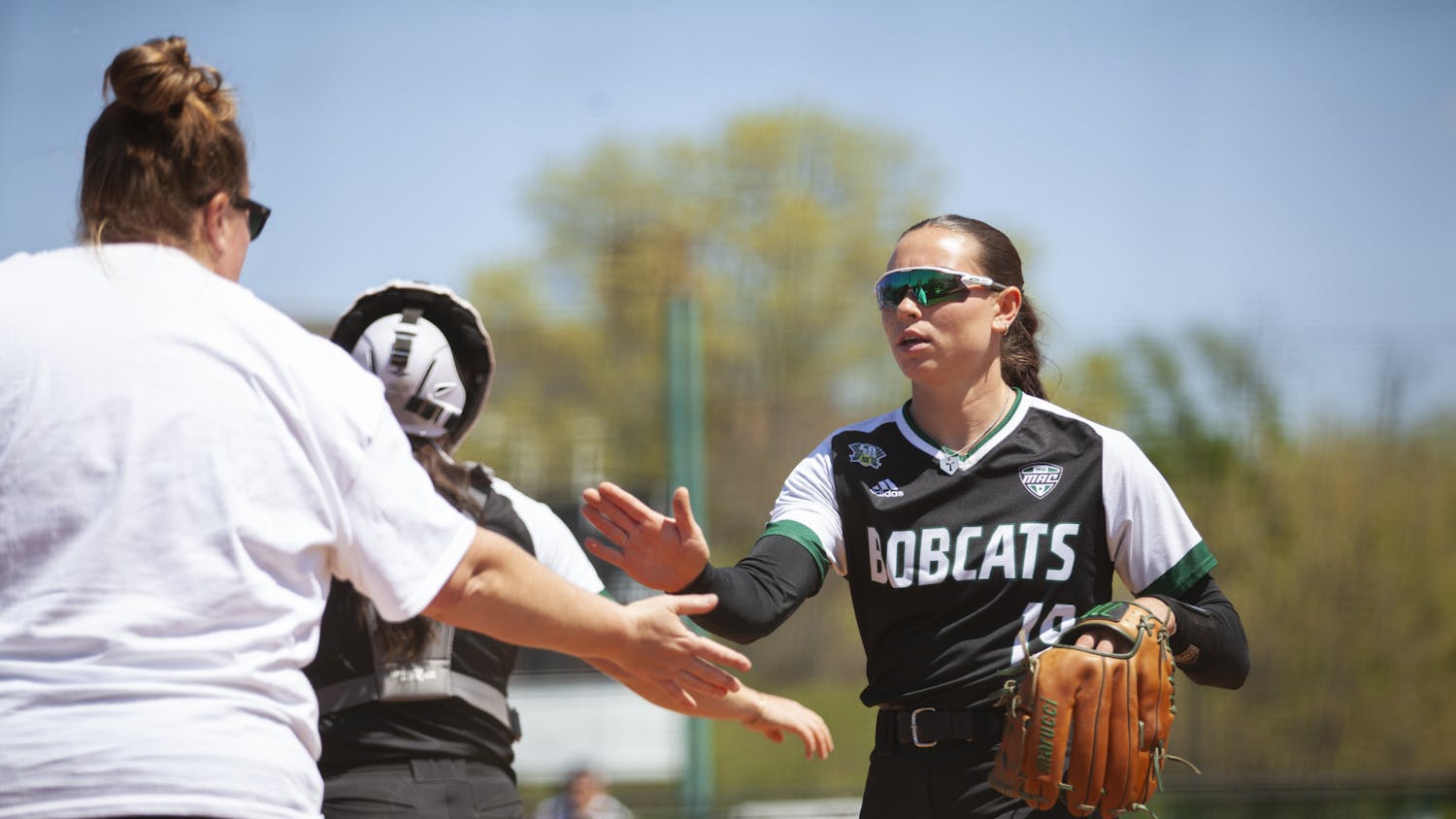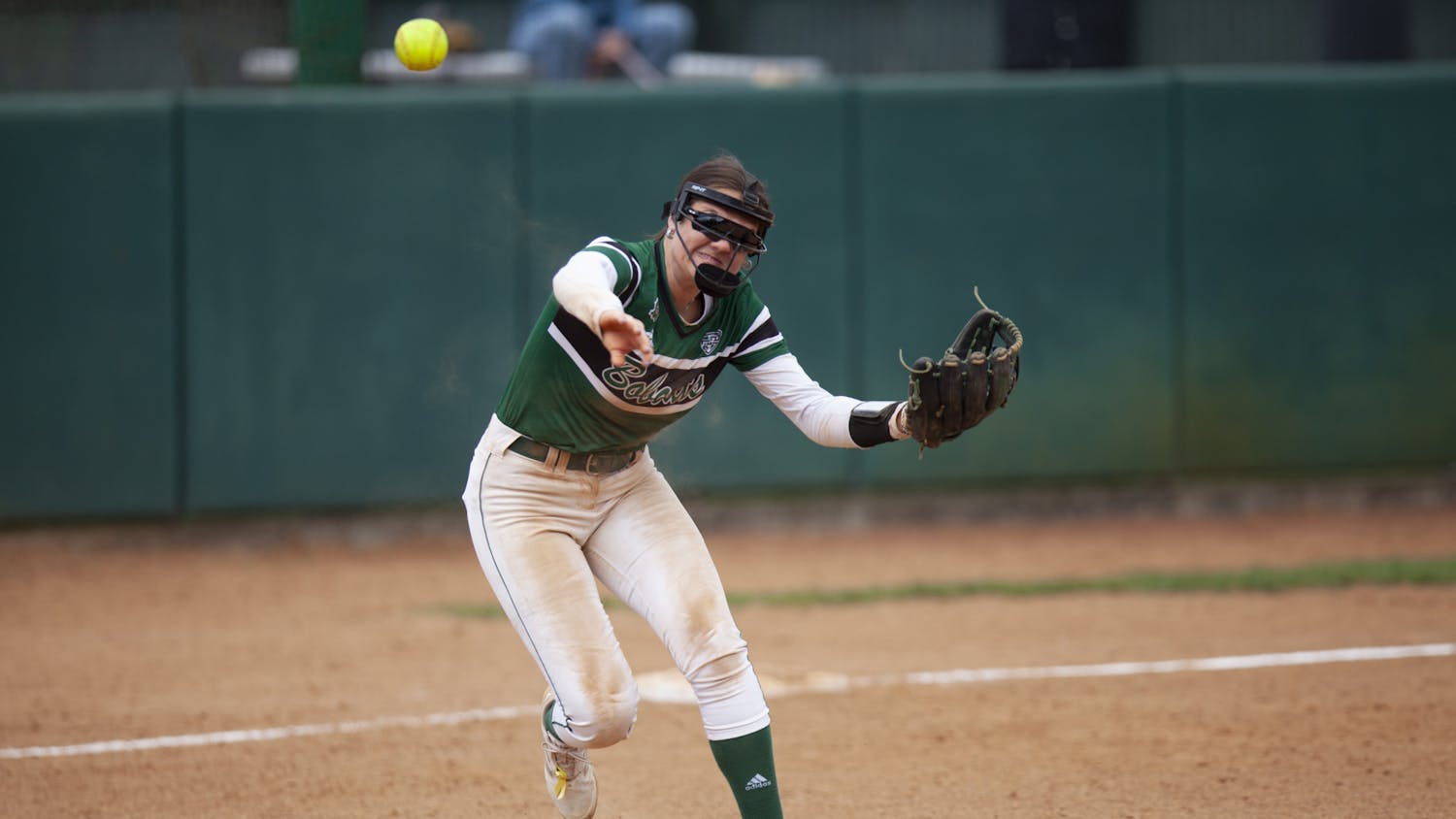Jana Houser, assistant professor of meteorology at Ohio University, has found data that supports the theory tornadoes form from the ground up.
In the past, meteorologists widely believed tornadoes formed from the top to the ground. Houser’s research, dating all the way back to her Ph.D. work in 2013, proves that may be false.
“On 31 May, 2013, a record breaking 2.6 mile wide tornado with winds exceeding 300 mph struck central Oklahoma, just outside the city of El Reno,” reads the abstract of Houser’s study.
One of Houser’s advanced weather radars collected data during the tornado’s formation. This was one of four major tornadoes in the study that helped prove Houser’s theory and all were within the Central Plains area of Oklahoma and Kansas, she said.
“We used a mobile radar that was very rapid-scanning, so basically the antennae spun around once every two seconds, so it was very fast,” Houser said. “Because it could acquire information about the atmosphere so quickly, we could gain insight into how the rotation with the tornadoes was developing over space and time, and, particularly, we were interested in the vertical evolution of that rotation with time.”
In addition to mobile radars, Houser and her colleagues used lightning flash frequency characteristics, Google Earth and storm chaser GPS logs, according to the study’s abstract.
The theory of tornadoes forming from the ground up is not new, but Houser said that technological advancements had a large role in legitimizing the theory.
“They were all spawned by the same parent storm type, which is called a supercell,” Houser said. “So there are other mechanisms that can produce tornadoes from other types of storms other than supercells and actually those storms were the original ones that were contributed to that bottom up hypothesis but people had thought that the super cells had formed tornadoes differently but we’re finding that’s probably not the case.”
Houser received her Ph.D. from the University of Oklahoma, which allowed her to be in close radius to the storms. She worked on the study with an officemate and group of meteorologist from the University of Oklahoma, she said.
Knowledge regarding the formation of tornadoes could help issue tornado warnings more effectively. However, Houser still thinks the future is bleak for forecasters because of their radar technology.
“Most weather service offices are basically using radar data as their primary source for issuing tornado warnings,” Houser said. “You will never see this bottom up process in the radar data that are available to forecasting offices. The radar are too high above the ground and the process is too quick. The radars don’t scan fast enough to observe this.”
To combat this problem, the severe storm community is trying to implement a new approach for issuing warnings. The technique, Warn on Forecast, uses computer models to predict if a storm may occur.The models can replicate storms that occur in the real world and see if a tornado may be produced. If the models produce tornadoes, forecasters may consider issuing a warning.
“That is a very different mentality from the warning protocol and procedures that are currently followed at the weather services offices and we’re not quite there yet,” Houser said. “We’re not quite ready to implement that technique.”






